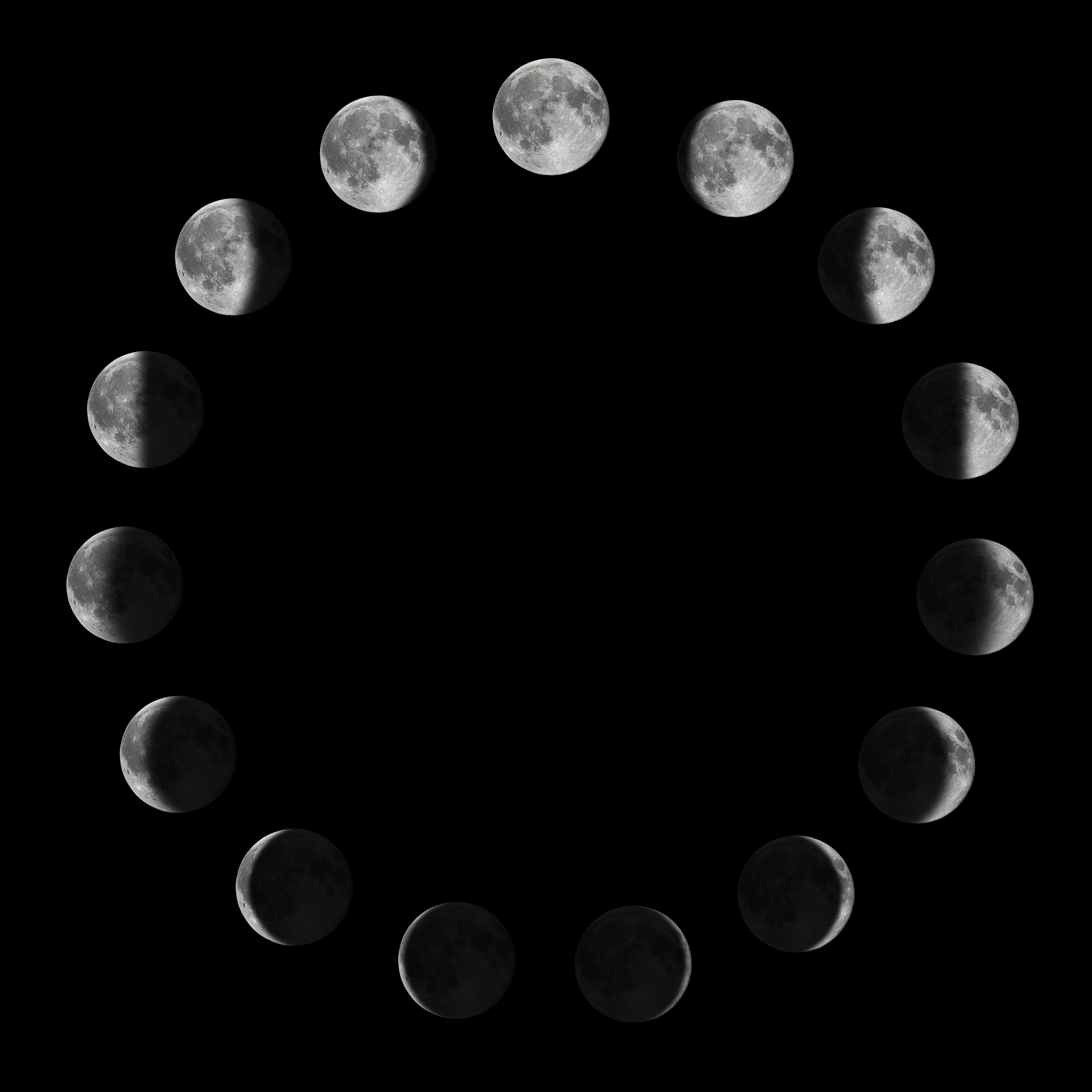Under the Stars: How Astronomy and Lunar Cycles Affect Diet and Weight Loss
December 29, 2023
 811
811 
In the vast expanse of the night sky, the moon’s rhythmic dance through its phases has captivated human imagination for millennia.
Beyond its luminous beauty and cultural significance, there lies an intriguing question: could these celestial patterns, particularly lunar cycles, subtly influence our behavior, including aspects as personal as our diet and weight loss efforts?
It’s a connection that weaves together the threads of astronomy and human biology, hinting at a fascinating interplay between the cosmos and our daily lives.
The idea that the moon could impact our health is not new.
Throughout history, many cultures have observed and revered lunar cycles, attributing to them a range of influences from agricultural patterns to human health and behavior.
Today, we stand at the intersection of ancient beliefs and modern science, exploring how these celestial cycles might still resonate within us, perhaps in ways we are only beginning to understand.
In this cosmic journey, we delve into how the lunar cycles could potentially sway our eating habits, exercise routines, and overall strategies for weight management.
From the potential effects of a full moon on our sleep patterns and appetite to the new moon’s influence on our motivation and energy levels, we will explore the less-trodden path of how the moon’s phases might be more than just a spectacle in the sky – they could be subtly guiding our health and wellness journey here on Earth.

As we turn the pages back to ancient times, the moon’s influence over life on Earth has been a subject of fascination and reverence in various cultures.
This celestial body, ever-present in the night sky, has been thought to hold sway over the natural world, including human health and behavior.
These ancient beliefs, while varied, share a common thread – the idea that the lunar cycles are intricately linked to the rhythms of life.
In many ancient civilizations, the moon was more than just a celestial object; it was a powerful force that governed the tides of the sea and the cycles of crops. This connection extended to human health as well.
For example, Traditional Chinese Medicine (TCM) has long held the belief that the phases of the moon exert a significant influence on bodily functions and well-being.
The waxing and waning of the moon were believed to mirror the ebb and flow of bodily energies, impacting everything from sleep patterns to digestion.
Similarly, in Ayurvedic medicine, an ancient health care tradition from India, the lunar cycles were thought to impact the doshas – the fundamental bodily humors that make up one’s constitution.
Aligning one’s lifestyle and diet with these cycles was believed to enhance physical and mental health.
Across different cultures, the phases of the moon have been marked by rituals and practices aimed at harmonizing human life with these celestial patterns.
Many societies have traditionally planned their planting and harvesting around the lunar calendar, a practice stemming from the belief that the moon’s phases affect the growth and vitality of plants – and by extension, the nutritional and medicinal properties of the crops.
The moon has also been a central figure in folklore and myth, often associated with transformation and renewal.
The full moon, in particular, has been a symbol of heightened emotions and behaviors.
While scientific research has yet to conclusively support some of these ancient beliefs, they underscore a longstanding human interest in the potential connections between the lunar cycles and our physical and mental well-being.
In this historical context, the moon’s influence on health and behavior is not just a matter of superstition or folklore.
It reflects a deeper understanding, perhaps intuitive, of the interconnectedness between the cosmos and life on Earth.
As we move forward, we’ll explore how contemporary science is beginning to unravel these age-old connections, particularly in relation to diet and weight loss.

Stepping beyond folklore into the realm of science, we begin to uncover the potential ways in which lunar cycles might indeed exert an influence on our biological processes.
While the concept might sound like something from a sci-fi novel, modern research has started to shed light on how these celestial patterns could have real, measurable effects on our bodies, particularly in terms of sleep patterns, hormonal changes, and mood fluctuations.
One of the most researched areas in this context is the impact of lunar cycles on human sleep. Several studies have suggested that our sleep quality and duration might fluctuate with the phases of the moon.
For instance, a study published in ‘Current Biology’ found that during the time around the full moon, people experienced reduced sleep quality and shorter sleep duration.
This phenomenon could be linked to the increased brightness of the moon, or perhaps more intriguingly, to some intrinsic biological rhythm synced with the lunar cycle.
The ebb and flow of hormones within our body are crucial to our overall well-being and could also be subject to lunar influences.
Some research points to variations in hormonal release patterns, such as melatonin – a hormone closely associated with the sleep-wake cycle – being affected by lunar phases.
A study in the journal ‘Chronobiology International’ suggested a possible link between the lunar cycle and the timing of melatonin onset in humans.
Beyond sleep and hormones, the moon’s phases might also play a role in mood and behavior.
While the idea of the full moon triggering erratic behavior is a common trope in folklore, some scientific studies have explored more subtle links.
For example, research has indicated potential correlations between the lunar cycle and certain aspects of mental health or mood disorders, although these findings are still a subject of ongoing debate and research in the scientific community.
As we venture deeper into understanding the connection between lunar cycles and human biology, it becomes apparent that these ancient beliefs might have been rooted in observable patterns and rhythms that science is now beginning to acknowledge and study.
The lunar influence, once dismissed as mere superstition, is gaining attention as a potential factor in understanding the complexities of human health, including aspects related to diet and weight management.
In this light, the moon’s impact on our biological rhythms is not just an artifact of ancient lore but a subject worthy of contemporary scientific inquiry, offering new insights into the intricate connections between our environment and our physiological processes.

As we delve deeper into the celestial influence of lunar cycles, an intriguing question arises: Can the ebb and flow of the moon’s phases also sway our eating habits and dietary choices?
This section explores the potential links between changes in mood or sleep patterns, as influenced by lunar cycles, and how they might subsequently impact our approach to food and nutrition.
The lunar cycle’s effect on sleep quality and mood fluctuations may have a cascading effect on our eating behaviors.
For instance, poor sleep, often associated with the full moon phase, can lead to hormonal imbalances affecting hunger-regulating hormones like ghrelin and leptin.
This disruption might increase appetite and cravings, particularly for high-calorie, carbohydrate-rich foods.
Furthermore, mood variations influenced by lunar phases could also play a role in our dietary choices.
Periods of low mood or increased stress might lead us to seek comfort in food, often leading to overeating or the selection of less healthy food options.
While the research in this area is still evolving, some studies have started to draw connections between lunar cycles and eating patterns.
For instance, a study in the ‘Journal of Sleep Research’ examined how the lunar cycle might affect the eating behaviors and meal patterns of individuals, finding subtle yet noteworthy variations across different moon phases.
Another interesting area of research has been around the concept of ‘lunaception,’ a theory suggesting that lunar light and its cycles can influence women’s menstrual cycles and hormonal fluctuations, which could, in turn, impact appetite and food cravings.
Understanding the potential impact of lunar cycles on our diet offers a more holistic approach to weight management.
It prompts us to consider not just what we eat, but also the external factors that might influence our eating habits.
This perspective encourages mindfulness and self-awareness in recognizing patterns in our appetite or cravings that could align with lunar phases.
As we align our understanding of diet and nutrition with the subtle yet profound influences of the lunar cycles, we open the door to a more attuned and harmonious approach to eating, one that respects the rhythms of both our bodies and the natural world.

Venturing further into the lunar labyrinth, we encounter another compelling aspect: the potential influence of lunar cycles on our energy levels and motivation for physical activity.
Just as the moon’s phases might sway our sleep and mood, they may also hold sway over how we approach our exercise routines.
The cyclical nature of the moon, transitioning from new moon to full moon, might mirror fluctuations in our energy levels.
For example, during the full moon, despite potential disruptions in sleep quality, many people report feeling more energetic or even restless, possibly due to the increased light and its effects on circadian rhythms.
This period might be opportune for more intensive workouts or trying new physical activities.
Conversely, the new moon phase, often associated with introspection and renewal, could be a time when our energy is lower, lending itself better to gentler, restorative forms of exercise like yoga or leisurely walks.
The idea of synchronizing exercise routines with lunar phases centers around the concept of working with our body’s natural rhythms rather than against them.
During phases when energy is high, such as around the full moon, it might be beneficial to engage in more vigorous activities. This could include high-intensity interval training (HIIT), running, or strength training.
In contrast, during the waning moon or new moon, when energy might wane, lower-intensity exercises could be more effective.
These activities could include stretching, pilates, or mindful practices like tai chi, which not only support physical health but also aid in mental relaxation and alignment.
While scientific research directly linking lunar cycles to physical performance is still nascent, the concept resonates with the broader understanding of how environmental rhythms can impact our physiology and behavior.
It’s a reminder of the potential synchronicity between celestial patterns and our personal wellness journey.
Adopting an exercise routine that takes into account the lunar phases can be a refreshing approach that adds a new dimension to fitness.
It encourages an attunement to natural cycles, promoting a balanced and holistic view of health and well-being.
In conclusion, as we navigate our fitness regimes, considering the subtle influences of the lunar cycles could enhance not only the effectiveness of our workouts but also our connection to the natural world, adding a deeper, more rhythmic quality to our pursuit of health and wellness.

Embracing the moon’s influence on our well-being isn’t just about acknowledgment; it’s about actively syncing our lifestyle habits with its rhythmic cycle.
This section offers practical, actionable advice on how to potentially align eating habits and workout schedules with lunar phases, harmonizing our natural rhythms with those of the celestial bodies.
By incorporating these practices into your lifestyle, you can begin to harmonize your personal health journey with the natural cycles of the moon. This approach is not just about physical well-being; it’s about cultivating a deeper sense of connection with the natural world and the celestial rhythms that influence our lives.

As our journey under the moonlit sky draws to a close, we reflect on the fascinating exploration of how lunar cycles might intertwine with our diet and weight loss efforts.
From the ancient lore that first hinted at the moon’s influence on human health to the modern scientific inquiries uncovering its subtle effects on our biology, sleep patterns, mood, and behavior, the lunar connection offers a unique lens through which to view our wellness journey.
The moon’s phases, cycling from new to full, appear to echo in the rhythmic patterns of our own bodies – influencing not just the tides, but potentially our appetites, energy levels, and motivation for exercise.
While the scientific community continues to explore and debate these celestial influences, the possibility of such a connection invites us to consider a more holistic approach to weight management.
I encourage you, as readers, to observe and understand your own patterns in relation to the lunar cycles.
Notice any shifts in your eating habits, cravings, energy levels, and moods as the moon waxes and wanes.
Embrace the idea of syncing your diet and exercise routines with these phases, not as a strict regimen, but as a harmonious alignment with nature’s rhythms.
Remember, the journey to weight loss and overall health is multifaceted and deeply personal.
Incorporating an awareness of lunar cycles into this journey can add an enriching dimension, fostering a deeper connection with both the world around us and our own internal rhythms.
As you look up at the night sky and witness the moon in its various phases, let it be a reminder of the natural cycles that influence our lives and the potential for attuning to these rhythms in our pursuit of health and wellness.

A new study suggests that a widely used sugar substitute found in diet sodas, chewing gum, and low-sugar yogurt may elevate insulin levels. This could increase the long-term risk of heart disease. “Artificial sweeteners have infiltrated nearly all types of food, making it crucial to understand their long-term health effects,” said Yihai Cao, senior author […]

Diet Coke has long been a fan-favorite among soda lovers who want a fizzy, guilt-free alternative to traditional soft drinks. While its zero-calorie, zero-sugar label makes it seem like a healthier option, the reality is far more concerning. Despite its undeniable popularity, Diet Coke’s nutritional profile has raised red flags among health experts for years. […]

New study shows that embracing an anti-inflammatory, plant-forward diet can support cognitive function and help reduce the risk of dementia. What You Eat Shapes Your Brain The food you eat doesn’t just impact your body—it also affects your brain. Research suggests that eating an anti-inflammatory, plant-based diet can help improve memory, focus, and overall brain […]